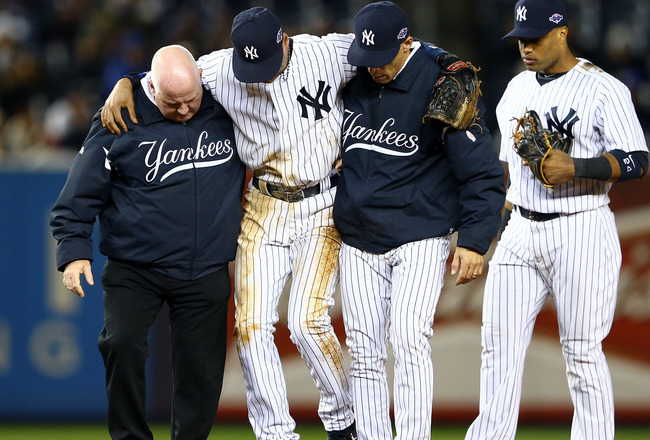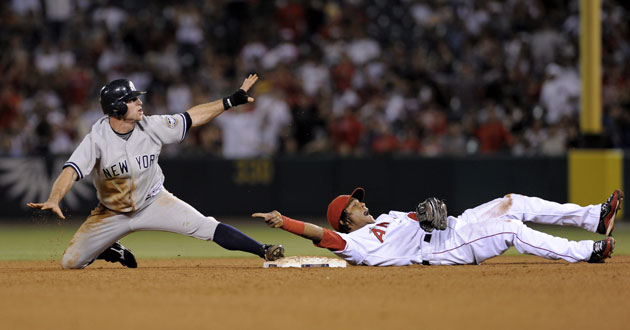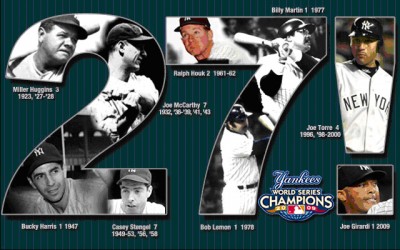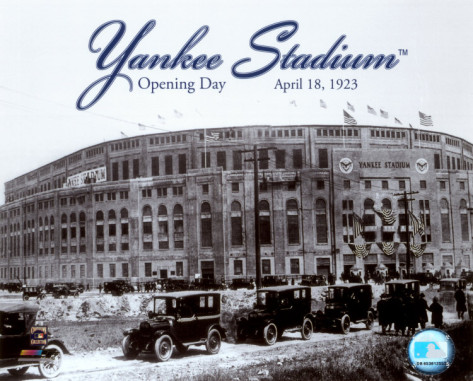With all of the news to keep track of, I decided to dedicate this blog to updating the injury reports for the fans.
- It was discovered that Jeter has a new fracture in his surgically repaired right ankle. The fracture was thought to have happened after Jeter felt stiffness in his ankle during a game on March 19th in Florida, against the Phillies. Although not being able to play has been both frustrating and tough for Jeter, he maintains a positive attitude about it, stating that there is no doubt he will be back before the season ends. It is to be expected that he won't return until after the All-Star break in July, though no date has been set. Originally, Jeter was set to make his debut on Opening Day 2013, after injuring in ankle during the play-offs last year. "My job is to be ready for Opening Day. I feel like I didn't do my job," he said. Jeter stated, "My job was to be ready; unfortunately, I wasn't. I don't regret it, because I think you have to set goals to try to reach those goals. I'm never one to just sit back and have a lot of patience when it comes to anything being wrong."

- Catcher Francisco Cervelli is set to have surgery on his fractured right hand. During a game off of a foul ball against the Toronto Blue Jays. Catcher Chris Stewart will now take the leading role in the position, while top prospect Austin Romine has been called up from Triple A for back-up. Cervelli is expected to be out for at least a month and a half. "It is disappointing for him because of all that he has been through," Girardi said. After the Yankees acquired Chris Stewart to back up former Yankee Russell Martin, Cervelli was sent down to Triple A for most of the 2012 season. He worked extremely hard during the off-season in order to prove he deserved to be an everyday player in the Yankees line-up. Although Cervelli and Stewart were battling to become the everyday catcher, Cervelli played in 17 of the first 22 games, as opposed to Stewart's eight games.

- Starting pitcher Ivan Nova has soreness in his elbow, causing him to leave the game early last week. Before the start of the third inning where he was faced with a comeback single, Nova approached Joe Girardi and trainer Steve Donohue about discomfort right above his tricep or elbow. He continued to pitch into the third inning, but was taken out by both Girardi and Donohue after they noticed he didn't look okay.

- Kevin Youkilis is now on the 15-day disabled list due to a stiff back. Youkilis missed nine games due to the soreness in his back. He received an epidural the other day in order to reduce the pain. Youkilis will not be able to come back earlier than mid-May because he played Girardi put him in Saturday's game, which makes him ineligible to return any earlier.

- Outfielder Curtis Granderson taking batting practice, he is expected to return to the Yankees line-up at the beginning of May. Granderson fractured his right forearm during the team's home opener during Spring Training. On a two ball and two strikes count. he was by J.A. Happ. “Five pitches in we have a little setback,” Granderson said. “They said it could be worse, but… Now we rest, recover, get it back and get ready to play whenever that day comes.” Granderson will be a free-agent following the 2013 season. He led the Yankees in homers for the past two seasons.

- First baseman Mark Teixeira is still a little ways from returning to the team. Teixeira tore his tendon sheath in his right write in the midst of preparing for the World Baseball Classic . Originally, the first baseman was set to come back on May 1st, but that timetable doesn't appear to be realistic right now. Tex says his wrist is still quite stiff, making it difficult to continue to progress into hitting baseballs. He is currently taking dry swings as practice. "I've said all along, this is probably the most unpredictable one," said Girardi.

- Bullpen reliever Joba Chamberlain was just put on the 15-day disabled list for an oblique strain. Chamberlain stated that he felt quite a bit of discomfort while prepping for a game this past week. Tests results later on showed the oblique strain, which makes him the tenth Yankees player to be placed on the disabled list thus far.










.jpg)
